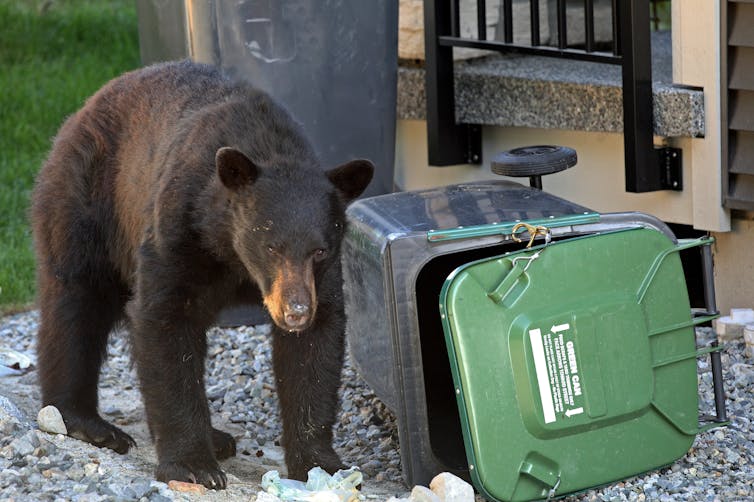In 1967, two simultaneous grizzly bear attacks in Montana’s Glacier National Park launched an era of research into human-bear conflicts.
Studies showed the importance of stopping two specific bear behaviours: food conditioning and habituation to people. Those pioneering findings translated readily into advice and policies, saving many bear and human lives.
However, all that work assumed ecosystems remained stable: a notion now upended by climate change. Food shortages acutely increase conflicts between bears and people, but we have not applied this awareness to the “new normal” of climate-driven ecological disruption.
Climate change and bear behaviour
A new perspective is needed to understand how bears and the ecosystems that support them are affected by climate change, and how those stresses, in turn, might create novel risks for people. Rare situations such as predatory attacks remain poorly understood, but are becoming common enough to require precautions.
In 2018, a grizzly bear killed a woman and her infant near their remote Yukon cabin in late November, long after that bear should have been hibernating in its den. The coroner’s office reported the bear was an underweight older male and concluded this was a predatory attack.
Yukoners were quick to point fingers at climate change, noting the mild autumn weather across the territory. That attack shook up a lot of people, possibly because it took place after people had relaxed their usual bear precautions for the winter. But that’s not wise anymore.
That wasn’t the only winter-active bear that year either: two more were shot to prevent conflicts with people and others were reported in northern British Columbia.
During my PhD research, I documented northerners’ stories about winter-active bears: they were described as extremely rare, but very dangerous to meet. Multiple such bears in a single year clearly indicates something’s changing.
More people, more conflicts? It’s complicated
The recent dual-fatality attack by a grizzly bear in Banff National Park has not been declared predatory, but the public facts are consistent with such behaviour: an older bear in poor physical condition.
Similarly, reports that link this year’s berry crop failure to more frequent human-bear interactions are plausible and even likely, but we don’t yet have the information to be certain.
We need to learn more about how all these observed changes may be related.
Since the 1970s, the rule of thumb was that human visitation rates in parks drove conflicts with bears: essentially, the more people, the more problems. However, my own early research showed conflicts between people and polar bears weren’t actually related to visitation levels in northern Canadian national parks.
Wanted: new research on human-bear conflicts
New research is needed, focusing on the long causal chain between climate-driven environmental variability in different ecosystems, bears’ behavioural and physiological responses, how those responses affect their interactions with people, whether those interactions become conflicts, and how they end.

Climate change can have unexpected and indirect effects on human-wildlife interactions. Polar bears could provide a model system for developing this new approach, since they’re affected by a single climate impact — loss of sea ice that reduces their ability to hunt seals — rather than the multiple impacts that could affect an omnivorous species like grizzly bears.
Research has shown that underweight adult male polar bears are most likely to attempt to prey on people, an observation that could have implications for other bear species, too.
The old paradigm focused on protecting recreational visitors to parks, but a new paradigm must be more inclusive especially of rural and Indigenous communities, particularly in the north, which is changing faster than anywhere else. Indigenous and local knowledge must, therefore, be at the core of new research approaches because these communities have the most at stake, as well as the most direct experience of these new situations.
This new paradigm for investigating human-bear conflict must be interdisciplinary because we need to understand the ways people fit into the picture, too. How people act during an encounter with a bear affects how the conflict turns out.
Local expertise can provide crucial guidance, as can science. We need to bring together these different ways of knowing in order to provide people with effective, evidence-based advice to stay safe in changing bear country.
Douglas Clark, Associate Professor in Human Dimensions of Environment & Sustainability, University of Saskatchewan
This article is republished from The Conversation under a Creative Commons license. Read the original article.











